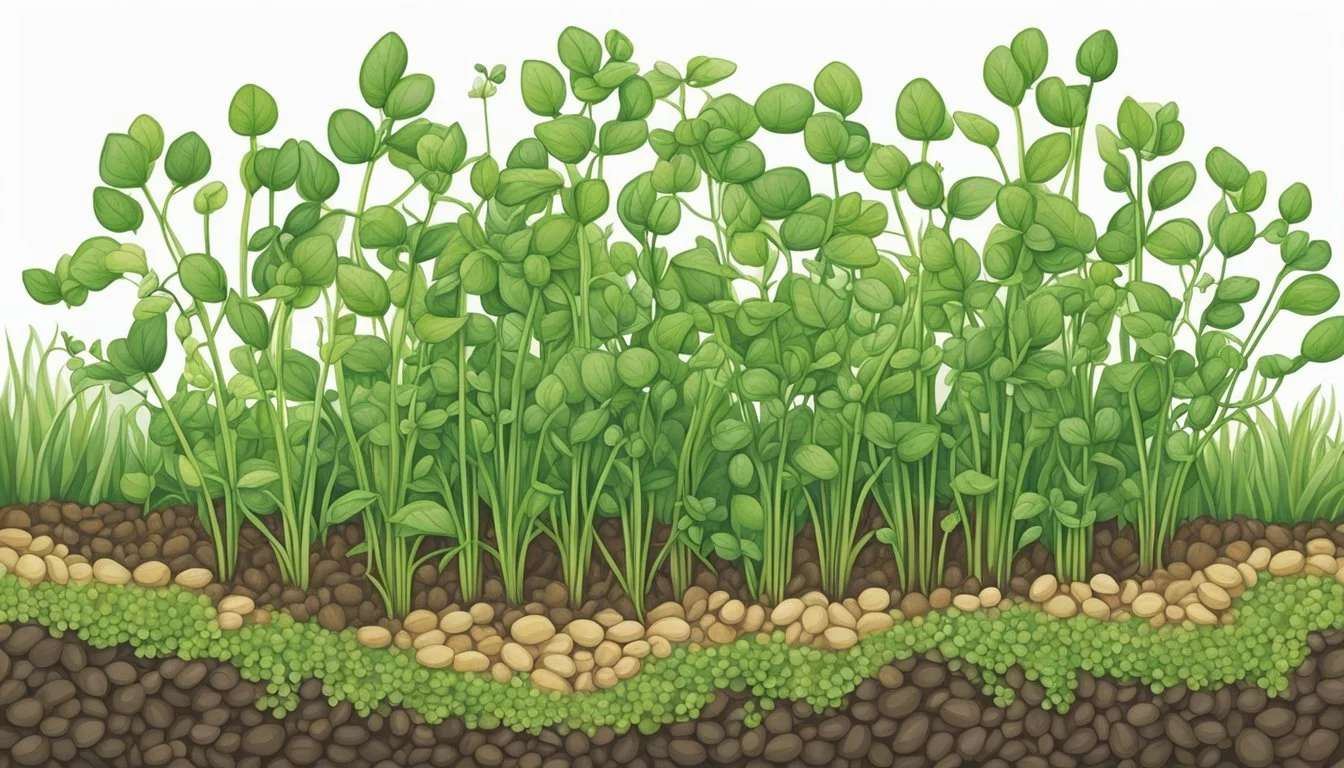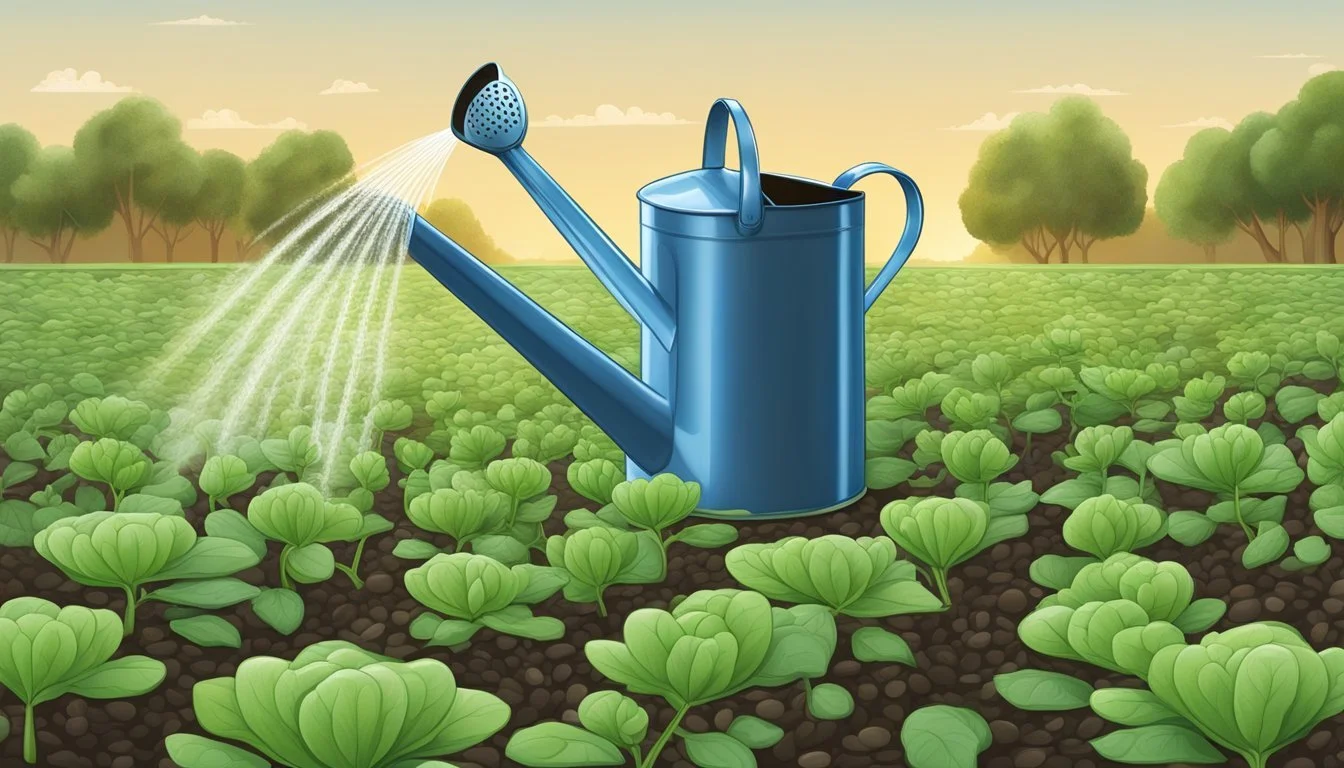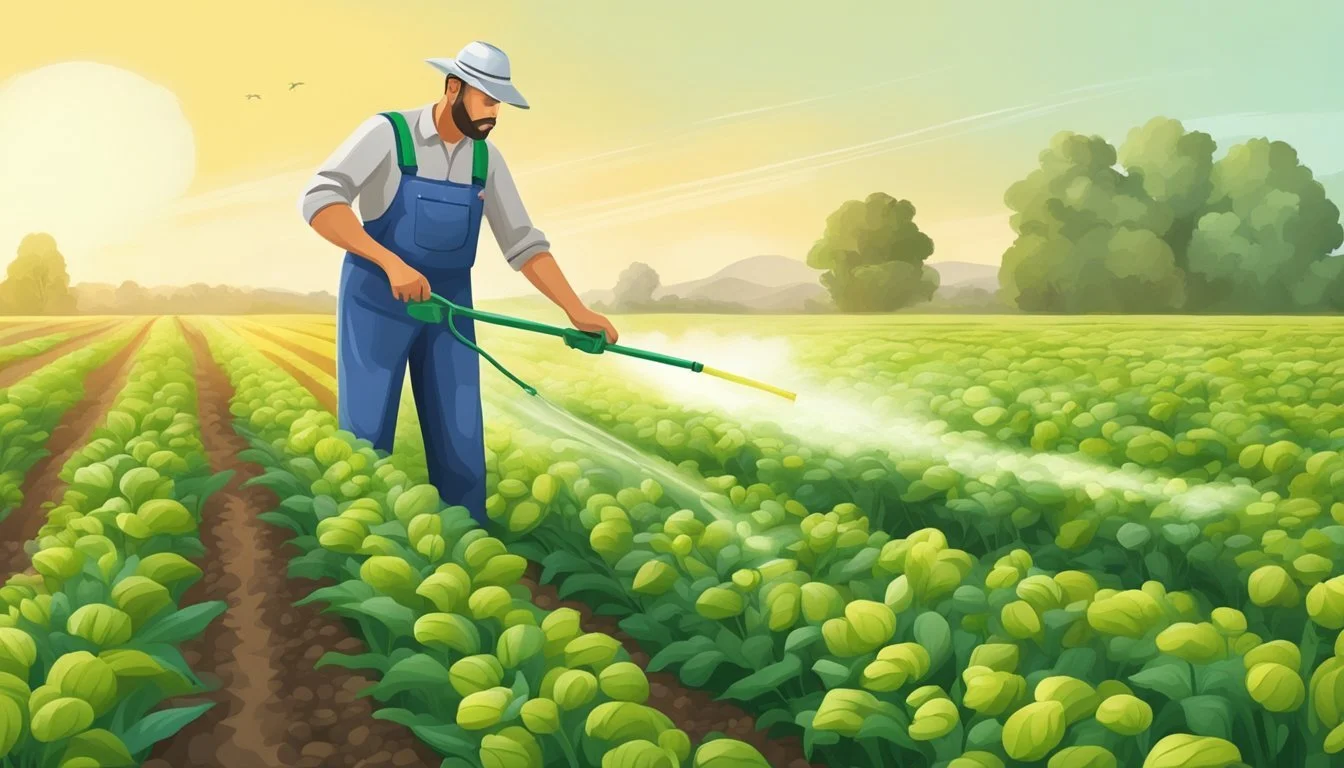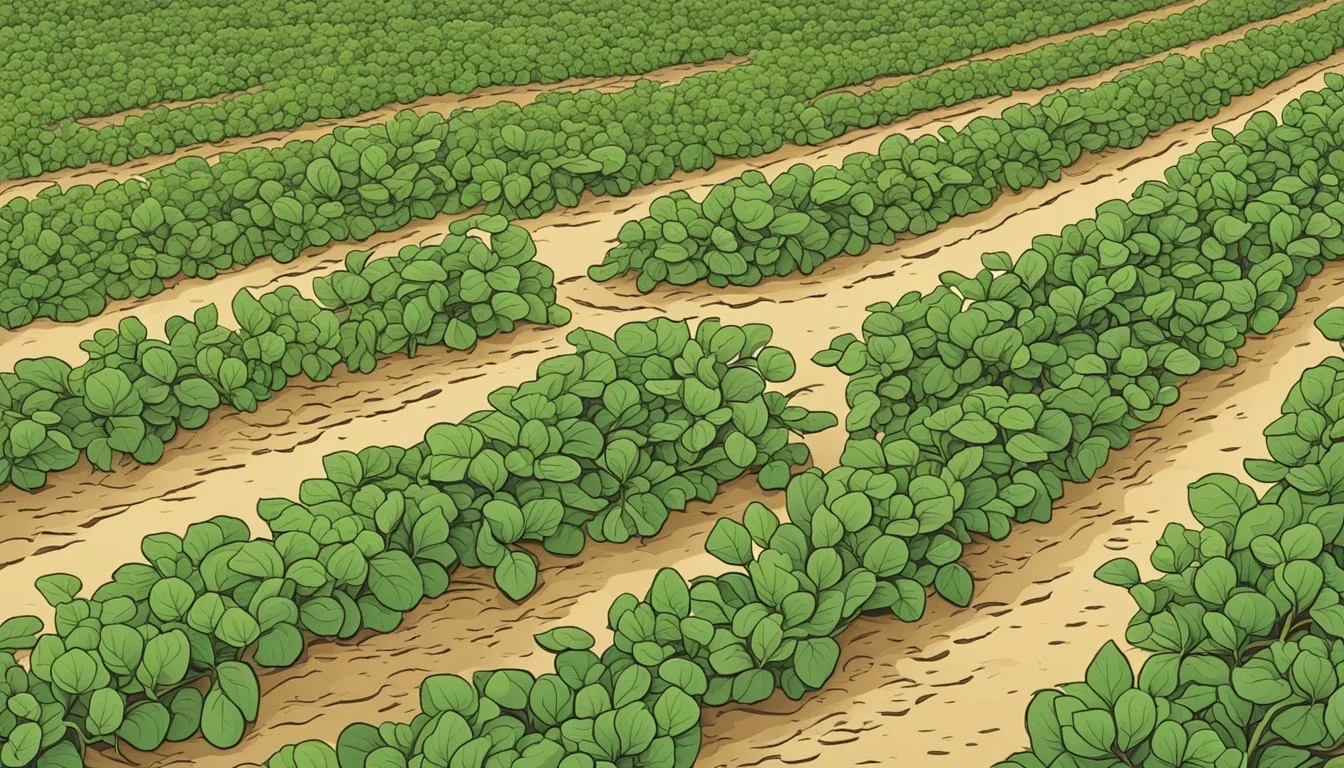Pest Control for Lentils
Effective Strategies for Protecting Your Crop
Lentils are an essential crop with significance in global cuisine, celebrated for their nutritional content and versatility in various dishes. However, like any crop, lentils are susceptible to pest infestation, which can compromise both yield and quality. Effective pest control is crucial for maintaining the health of lentil crops and ensuring a successful harvest. Managing pests in lentil cultivation requires a practical approach that encompasses preventive measures, proper identification of pests, and the application of control techniques alignment with sustainable agricultural practices.
Implementing pest control strategies in lentil farming ranges from traditional methods to advanced techniques tailored to specific pest species. Farmers must carefully consider the types of pests prevalent in their region, such as aphids, seed beetles, or weevils, to employ suitable control measures. Options include the use of natural repellents or biological control agents, which can mitigate pest populations without harming the environment. Additionally, understanding the cultivation practices, such as the importance of crop rotation and the selection of pest-resistant lentil varieties—information that can be gleaned from resources like agricultural reviews—is vital for integrated pest management (IPM) systems that aim to minimize pest damage effectively.
(statearrassistant
Lentil Overview
Lentils are a staple legume in many cuisines worldwide due to their versatility, nutritional value, and ability to thrive in diverse climates. Being a part of the pulse family, they are a significant source of protein and iron for vegetarians and non-vegetarians alike.
Lentil Types and Varieties
Lentils (Lens culinaris) come in a multitude of types, each distinctive in color, size, and taste. The common varieties include:
Red Lentils: Quick-cooking and tend to become mushy upon cooking; ideal for soups and purees.
Green Lentils: Retain their shape well and offer a peppery flavor; suitable for salads and sides.
Brown Lentils: The most common variety, with an earthy flavor and a tendency to retain their shape if not overcooked.
Black Lentils (Beluga): Rich and hearty, resembling caviar in appearance, holding their texture well.
French Green Lentils (Puy): Have a firm texture and a nutty taste, often used in gourmet dishes.
Lentil Growth Requirements
Lentils flourish in temperate climates and are resilient to a range of soil conditions, however, they prefer well-draining soil. The key growth requirements for lentils are:
Soil: Neutrally to slightly alkaline pH, well-drained.
Climate: Grows in a variety of climates but prefers temperate zones. Adequate moisture levels are necessary during germination and early growth stages, but excessive water can lead to plant diseases.
Sunlight: Full sun exposure for optimum growth.
Nutritional Profile
Lentils are a powerhouse of nutrition providing essential nutrients. A typical serving of lentils includes high levels of:
Protein: Integral for muscle repair and growth, it constitutes about 25% of the calories in lentils.
Iron: Vital for oxygen transport within the body, iron is abundantly found in these legumes, making them a great choice for preventing anemia.
In addition to protein and iron, lentils are also a good source of dietary fiber, folate, and various minerals which contribute to overall health. Their low glycemic index makes them a favorable option for individuals managing blood sugar levels.
Soil Health for Lentils
Proper soil management is crucial for the successful cultivation of lentils. Soil health directly affects the growth and yield of these leguminous plants, making it a primary area of focus for farmers.
Importance of Soil pH
Soil pH is a vital factor in lentil farming. Lentils thrive in soil with a pH range of 6.0-7.0, as this slightly acidic to neutral pH range favours nutrient availability. Maintaining the appropriate pH level ensures that lentils can absorb essential nutrients efficiently. Regular soil testing allows farmers to amend soil pH using limestone to raise it, or elemental sulfur to lower it when necessary.
Soil Nutrients and Lentil Growth
Lentils require well-balanced nutrition for optimal growth. Nitrogen is particularly significant since lentils fix atmospheric nitrogen; however, they still benefit from a modest amount of nitrogen in the soil at planting. Phosphorus is also crucial for lentil health, supporting root development and energy transfer within the plant. Soil should ideally contain 15 to 30 ppm phosphorus for lentil cultivation. The addition of compost can enhance soil structure and provide a slow-release source of nutrients, including nitrogen and phosphorus. This organic matter not only boosts nutrient content but also improves soil water retention and microorganism activity, leading to more vigorous lentil plants.
Climatic Influence
In the realm of lentil cultivation, the impact of climate on pest dynamics is a critical factor that must be attentively managed. This influence is seen mainly through variations in temperature and humidity, and the establishment of conditions that either suppress or encourage pest populations.
Temperature and Humidity
Temperature and humidity levels significantly affect lentils as they can alter pest reproduction rates, survival, and distribution. For instance, the reproductive rates of lentil pests like aphids are higher in warmer temperatures. Likewise, high levels of humidity can promote the prevalence of fungal diseases, which in turn can increase pest problems.
Optimal temperature range for lentils: Usually between 20°C to 30°C
Humidity: Moderately dry conditions are preferable
Lentils, being cool-season legumes, face challenges when temperatures deviate from this range, either through increased pests or heat stress on the plants themselves.
Favorable Climatic Conditions for Lentils
Ideal climate conditions for lentils include mild Mediterranean-like climates with a cool spring. Such climates offer the following advantages:
Reduced risk of frost damage that can affect young lentil plants
Sufficient rainfall for growth without the waterlogging stress
Low humidity levels to deter pest and disease proliferation
Given these parameters, pest management strategies can be crafted to align with the expected climatic conditions. Effective monitoring and adaptive control measures are essential, particularly in regions where extreme weather conditions might deviate from the optimal climate for lentils. This includes handling drought stress, as lentils are relatively drought-tolerant but still can face pest pressures under extreme conditions.
Watering and Drainage
Proper irrigation and drainage are critical for the health and yield of lentil crops. These factors not only influence the growth and quality of lentils but also impact pest management strategies.
Watering Requirements for Lentils
Lentils require a consistent supply of water during their early growth stages, but overwatering can increase the risk of disease. They thrive in conditions where moisture is available but not excessive. Generally, lentil plants need about 350-400 mm of water throughout the growing season. The optimal schedule involves deep, infrequent watering to encourage strong root development. Moisture levels should be monitored regularly, as both drought and waterlogging can adversely affect the plants.
Drainage Importance for Lentil Crops
Effective drainage plays a crucial role in lentil cultivation. Lentil crops are sensitive to waterlogged conditions; thus, well-draining soil is essential to prevent root rot and other moisture-related diseases. An ideal lentil field should have a slight slope or be equipped with effective drainage systems to facilitate excess water runoff. Drainage is also beneficial in managing pest populations, as standing water can attract pests and create a habitat for their proliferation. Ensuring proper drainage can lead to healthier plants and reduce the likelihood of pest infestations.
Pest and Disease Management
Effective pest and disease management in lentil crops is crucial, as it ensures the healthy growth of plants and subsequently maximizes yield. This section provides insight into common lentil pests and diseases, explores integrated pest management strategies, and discusses biological control methods that can be employed by growers.
Common Pests and Diseases in Lentils
Pests: Lentil crops are susceptible to various insect pests including weevils (e.g., Bruchus lentis), aphids (such as Aphis craccivora and Acyrthosiphon pisum), lygus bugs, cutworms, thrips, and the pod borer (Etiella zinckenella). For instance, weevils cause significant damage by feeding on germinating seeds and developing pods.
Diseases: Lentils also face diseases like anthracnose, caused by fungal spores, and various viruses that can hinder growth. Disease-causing agents can also affect the beneficial bacteria Rhizobium leguminosarum which is essential for nitrogen fixation in the soil.
Integrated Pest Management Strategies
Integrated Pest Management (IPM) involves a combination of cultural practices, biological control, and the cautious use of chemical control. Successful IPM aims to manage pest populations below damaging levels while reducing the reliance on pesticides.
Cultural Practices: These include crop rotation, planting disease-free or treated seeds, and removing infected crop residues.
Chemical Control: Chemicals like fungicides or insecticides may be necessary but should be used selectively to avoid the development of resistance among pests.
Biotic and Abiotic Stresses: Balancing control methods can minimize the impact of both biotic (living organisms) and abiotic (environmental) stresses on the lentils.
Biological Control Methods
Biological control methods utilize natural predators or parasites of the pests. For instance, Bacillus thuringiensis is a bacterium that can be used to control various larvae including that of the pod borer. Also, predators such as ladybirds can help reduce aphid populations.
Bruchids, which include various bean weevils, can be managed through the introduction of organisms that parasitize their larvae. The use of biological control, like introducing the natural enemies of the Sitonid weevil, contributes significantly to non-chemical pest management strategies.
Biological methods promote a healthy ecosystem and are an integral part of the cultural practices that form the basis of IPM, complementing resistance and minimizing the need for pesticides. Consequently, using these methods often leads to more sustainable pest and disease control in lentil cultivation.
Harvesting and Yield Optimization
Effective harvesting is crucial for ensuring quality lentils and maximizing yield. Understanding the right time to harvest and the methods to maintain crop quality can lead to significant yield optimization.
Best Practices for Harvesting Lentils
When it's time to harvest lentils, the plants should display a uniform yellowish-brown color, and seeds should rattle within the pods, indicating the right moisture content for harvest. Delayed harvesting can result in yield losses due to shattering, where seeds fall to the ground before they can be collected.
Timing: Harvest when moisture content is around 14-16% to minimize shattering.
Technique: Use a combine harvester with proper settings to ensure that seed pods are removed with minimal damage to the seeds.
Post-Harvest Handling: Ensure gentle handling to keep seed coat intact, which is crucial for market quality.
Maximizing Lentil Yield
To maximize lentil yield, it's essential to manage factors throughout the growing season that can lead to yield loss.
Adequate Planting: Spacing seedlings correctly can prevent overcrowding and promote adequate airflow, reducing the risk of disease and increasing yield.
Weed Management: Effective weed control strategies like herbicide layering are vital as they can greatly impact lentil yield by reducing competition for resources.
Pest and Disease Control: Integrate pest management with appropriate chemical and biological controls to protect the lentils from yield-limiting factors.
Soil Fertility: Apply suitable fertilizers based on soil testing results to provide essential nutrients for the growing lentils.
By meticulously managing these elements, farmers can both maintain the quality of the lentil fruit and optimize yield, mitigating any potential yield losses that may occur from inadequate pest management or poor harvesting practices.
Crop Rotation and Companion Planting
Strategic agricultural practices like crop rotation and companion planting are critical for maintaining healthy lentil crops. They primarily enhance soil health and mitigate pest issues.
Benefits of Crop Rotation
Crop rotation involves changing the type of crops grown in a particular area from season to season. This practice prevents diseases that affect lentils, such as those caused by fungus-related organisms, by interrupting the life cycles of pests and pathogens. Rotating lentils with crops from different families—such as cereals, corn, or potatoes—helps in breaking the chain of infection since these crops do not host the same diseases as lentils.
Prevents Disease Buildup: Following a lentil crop with non-hosts decreases the inoculum in the soil.
Improves Soil Fertility: Alternating with crops like peas or beans, which are natural nitrogen fixers, enriches the soil.
Effective Companion Plants for Lentils
Companion planting is the practice of cultivating different crops in proximity for mutual benefit. For lentils, certain plants can deter pests or enhance growth.
Marigolds: Their strong scent repels pests that might target lentil plants.
Potatoes: They can serve as a barrier crop, protecting lentils from winds and pests.
Key companions include:
Companion Plant Benefit for Lentils Marigolds Deters pests Potatoes Acts as barrier; controls pests
By leveraging these natural partnerships, lentil growers can improve crop health and yield without relying heavily on chemical controls.
Wild Relatives and Genetic Resources
Wild relatives of crops are a treasure trove of genetic material that can be used to improve cultivated plant varieties, especially in terms of pest resistance. These genetic resources are crucial for developing new lentil varieties with enhanced defense mechanisms against a multitude of pests.
Using Wild Relatives in Lentil Breeding
The breeding of lentils can greatly benefit from the incorporation of genes from wild relatives. These wild species are often adapted to harsh environments and may carry inherent resistance to pests that the cultivated varieties lack. The process involves identifying and then transferring desirable traits from wild lentils to their domesticated counterparts to enhance crop resilience. Researchers recognize the potential and limits of exploitation of crop wild relatives for pea, including lentils, affirming their integral role in agricultural advancements.
Genetic Diversity and Pest Resistance
The genetic diversity found in wild lentils is a significant resource for improving pest resistance in cultivated varieties. Diverse genetic pools contain various alleles that might confer resistance to different pests. By exploring these genetic resources, scientists can pinpoint resistant traits and perform genotypic characterization studies that inform breeding programs. This research leads to the development of lentil varieties that are better equipped to thrive despite pest challenges, ensuring productivity and sustainability in agriculture.
Cultivation Techniques
Effective cultivation techniques are paramount for producing a successful lentil crop. From the specifics of planting to weed management, each step is crucial for ensuring the growth of these nutritious legume crops.
Planting Techniques for Lentils
Precision in planting techniques can greatly impact the growth and yield of lentil crops. Lentils thrive in well-drained soil with a pH between 6.0 and 7.0. They should be sown at a depth of 1 to 1.5 inches in the soil, with a spacing of 1 to 2 inches between plants within the row. This encourages optimal air circulation and sunlight penetration. Moreover, farmers can further enhance the growth of lentils by employing cultural practices such as crop rotation to maintain soil health and minimize pest pressures.
Trellising and Support
While lentils are typically a bushy, self-supporting plant, some agricultural systems benefit from the use of a trellis. Support structures can be particularly helpful in regions with strong winds or heavy rainfall to prevent lodging. Trellising, however, is not a commonplace practice for lentil cultivation, as they do not climb like some other beans and vegetables.
Weed Management
Effective weed management is essential for the successful cultivation of lentils, which can be less competitive than weeds due to their moderate growth habit. Early control measures include mechanical weeding and the application of pre-emergent herbicides. Farmers can employ a variety of strategies, such as integrated weed management combining different tactics to reduce weed populations. Hand weeding, although labor-intensive, is essential for organic lentil production.
Lifecycle of Lentils
The lifecycle of lentils encompasses the journey from seed germination through to the final harvest, revealing a detailed understanding of the phases the plant undergoes.
From Germination to Harvest
Lentils are sown in the spring and begin their growth as seedlings. Upon planting, the seeds initially swell and then rapidly germinate within 10 days under suitable moisture and temperature conditions. The first true leaves appear shortly after. Lentils then progress through a vegetative stage, where they develop a robust root system and the stems shoot upwards.
The next phase pertains to reproduction, where flowers develop and self-pollinate. Following pollination, pods form which contain the lentil seeds. Each pod usually holds one to two seeds. They mature over the growing season, which for lentils typically spans 80 to 110 days depending on the variety and environmental conditions.
Understanding Lentil Life Cycle
The life cycle of lentils is an annual one, meaning they complete their life journey from seed to seed within one growing season. Understanding this cycle is crucial for pest management as insects such as the larvae of pest species, may attack the crop at specific stages. The eggs of these pests can be laid on the plants, and the emerging larvae feed on the developing lentil plants.
Early identification of such pests during the seedling phase can be beneficial as it allows for timely intervention. With appropriate management strategies, the impact of pests on the growth and yield of lentil crops can be mitigated.
Lentil Market and Economic Considerations
Lentil growers face challenges that are influenced by fluctuating market trends and the need for effective pest management decisions which directly impact the quality and yield of the lentil crop. Understanding the lentil market and economic thresholds helps in making informed decisions that can maximize returns and ensure sustainability.
Current Market Trends
The lentil market is heavily influenced by global supply-demand dynamics. In recent years, countries like Canada, India, and Australia have been leading the production, with significant volumes also being imported by India to meet its domestic needs. Location plays a crucial role in the economic return for producers, as both local and international markets require different quality standards and can offer varied pricing.
Major Producers: Canada, India, Australia
Quality Requirements: Vary by market location
Pricing: Influenced by international trade dynamics
Economic Thresholds and Decision Making
Deciding when and how to control pests in lentil crops relies heavily on understanding economic thresholds—the point at which the cost of pest control is justified by the crop yield preserved. Growers must consider the potential for damage against the costs involved in applying pest management strategies. A comprehensive approach is required, which includes initiating measures when pest presence is confirmed and projected to exceed the threshold where economic harm begins.
Economic Threshold: Level of pest presence justifying control measures
Decision Factors:
Cost of Control: Comparing control costs to potential yield loss
Quality Impact: Estimating the impact of pests on crop quality
Yield Preservation: Balancing control measures with yield benefits
Frequently Asked Questions
Pest management is crucial for maintaining the health and quality of lentil crops. Addressing commonly asked questions can provide growers with effective strategies to protect their produce from pests and diseases.
How can I prevent infestations of bugs in stored lentils?
It is essential to keep the storage area clean and dry. Using airtight containers can also prevent infestations by making it hard for pests to access the lentils. Learn more about storage practices from safe and natural pest control methods for lentil plants.
What is the most effective pest control method for lentils?
Crop rotation is an effective strategy for reducing pest populations, as it interrupts the life cycle of insects. Physical supports such as low trellises also contribute to the reduction of pest pressures by improving air circulation. For more on pest control, visit Heirloom Organics' guide on growing lentils.
What are the common signs of weevil infestation in lentils?
Common signs include the presence of small, brown beetles or grubs and the appearance of holes in the lentil seeds. Visible damage to the crop often indicates a serious infestation.
Are there specific diseases affecting lentil crops and how can they be managed?
Yes, diseases such as Fusarium wilt and root rot can affect lentil crops. Management includes the use of disease-resistant seeds and the implementation of proper irrigation practices to avoid waterlogging. Information about lentil diseases can be found at PlantVillage's lentil topic.
What pesticides are recommended for use on lentil crops?
Only pesticides approved for use on food crops should be used, with a preference for those that are less harmful to beneficial insects and the environment. Always follow the manufacturer's instructions and regulations regarding pesticide use.
How often should lentils be inspected for pest presence?
Regular inspection, at least once a week, is recommended to detect any early signs of pest infestation. Timely identification allows for quicker and more effective interventions.










